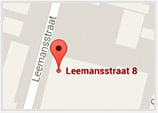HOW TO GET STARTED.
Prior to operating the equipment, the user should remove all inflammable products from the workshop and inspect the equipment; if necessary, he should replace worn or damaged parts of the equipment. If work has to be done to pipe lines or containers, they should first be flushed by means of an inert gas.
In order to start cutting, he will connect the reducing valve to the oxygen cylinder and the hose of the cutter. He will connect the electricity cables for the ignition to the cutter and the ignition plate to the battery. Then he opens the tap of the reducing valve until the flow rate required is reached, usually 2.8 to 5 Bar, depending on the material to be cut and its thickness. Using gloves, he will unscrew the collet nut of the cutter and insert the hollow side of an electrode in the cutter. He makes sure that the electrode is fully inserted in the collet in order to prevent oxygen leaks. The collet nut is tightened by hand. In order to ignite the electrode and start the flame, the user will hold the cutter in his one hand and the ignition plate in the other. A slight squeeze in the oxygen handle will allow oxygen to flow through the cutter and the electrode. Under an angle of 45° the electrode is slowly rubbed over the ignition plate, until it ignites, the electrode will begin to spark. The user can now start working. The electrode will burn as long as there is oxygen flowing through it, until it is completely burnt up. The temperature at the end of the electrode is 5000° Celsius.
TECHNIQUES.
The users apply the electrode to pierce pins, rivets and bolts. To pierce, the electrode is held perpendicular on the workpiece and with a slight flow of oxygen (slight pressure on the handle), the burning point is pushed into the workpiece. The oxygen pressure is set to 2.5 Bar to prevent backfiring or sparks. As soon as the point is approximately 7mm deep, the oxygen handle can be pressed in order to work faster.
By moving the point in and out of the piece, the melted material is blown away. When a depth of more than 10cm is reached, the oxygen pressure will be increased tot 3.5 Bar in order to continue the process. To avoid the electrode from getting stuck in the hole, the oxygen supply will not be interrupted until the point is removed from the workpiece.
In order to start a gouge, the user will place the electrode at an angle of 45° on the workpiece and will point the burning point in the direction of the gouge that has to be made. The oxygen pressure is at 2.5 up to 2.8 Bar for shallow gouges and at 2.8 to 3.5 Bar for a deep gouge. As soon as a little hole is formed, he will reduce the angle to 5 up to 10° and will push the probe in the direction of the gouge to be made.Contrary to air carbon arch gouges, you do not need a welding device or compressor. Moreover, there is no danger of high currents, noise or smoke. The process does not build up carbon and does not require prior cleaning or sanding the workpiece.
In order to cut with the electrode, the user will pull it over the workpiece. The working angle at the surface can fluctuate between 45 and 90 degrees; always keep the tip in the groove in order to prevent backfire. Melted material must be blown out of the groove in a forward direction; if is flows backwards, you must work at a lower pace. The oxygen pressure is 2.1 to 2.8 Bar for soft steel and iron up to 1.5cm thick; 2.8 to 3.5 Bar for non-ferrous metals up to 2.5cm and iron of 1.5 to 2.5cm.; 3.5 to 4.2 Bar for all metals up to 5cm and 4.2 to 5 Bar for all heavier work.
APPLICATIONS.
Maintenance crews use ultra-thermal systems to remove fixed bolts. They first pierce the pin and cool it with water; as a result, it will shrink approximately 2.5mm. The process is repeated until it is possible to hammer the pin out. An ultra-thermal electrode can loosen a fixed pin in approximately 30 seconds. Fast repairs to the teeth of excavation devices can be performed on site. A bent tooth of a bulldozer shovel can be obstructive when trying to reach the ground. The tooth can be quickly removed without taking the machine out of operation. After the excavation works, at the end of the day, the welding joint of the tooth and the shovel can be gouged out and a new tooth can be welded to it. Also on site, it is possible to gouge out stress cracks in bridges and other structures. In order to repair the cracks, holes will be drilled at the end of the crack and then the crack will be gouged out in order to prepare the basic material for repair by means of a welding joint.



